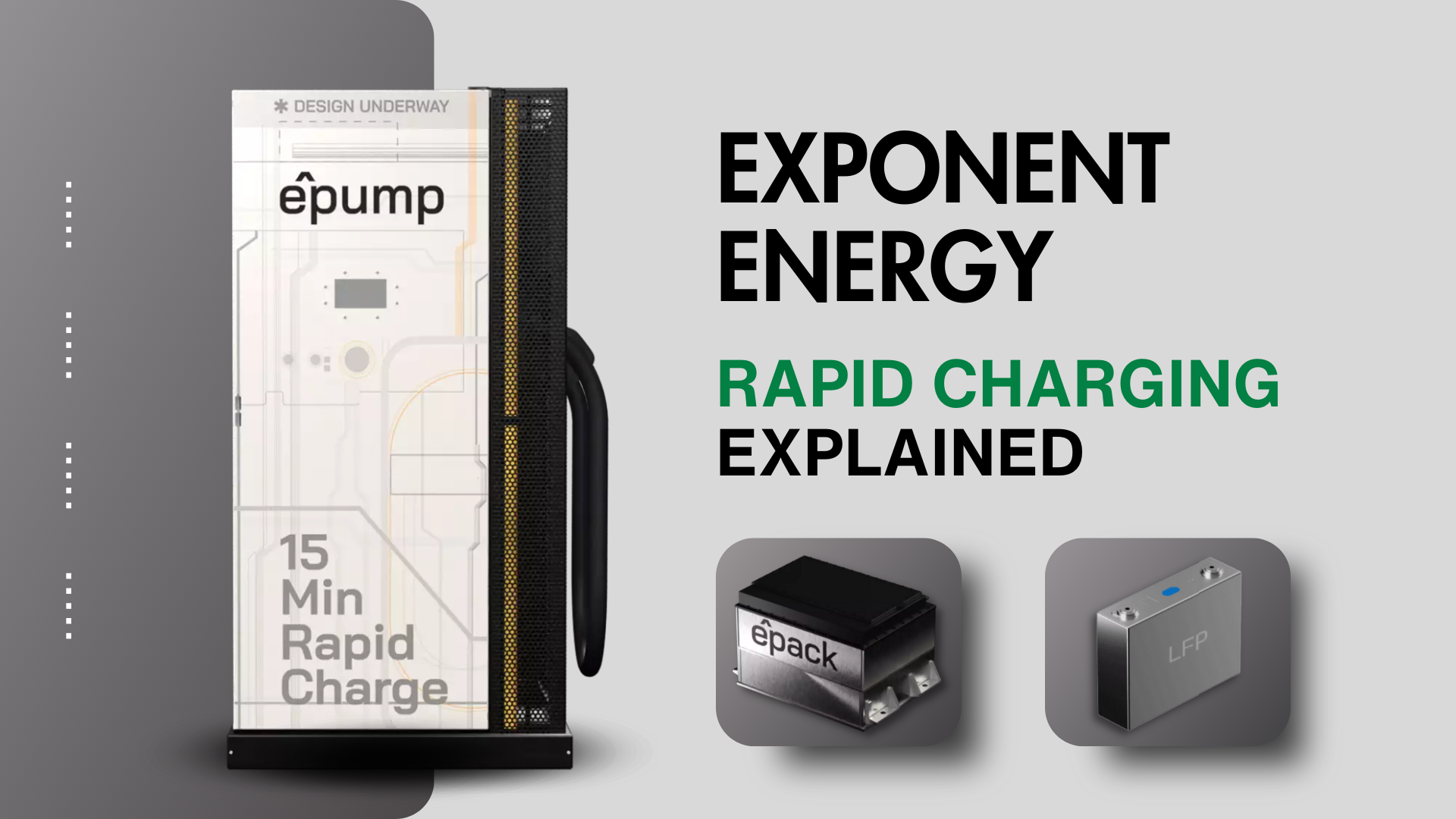Table of Contents
Exponent Energy Rapid Charging
Exponent Energy, a Bengaluru-based startup has unveiled an energy stack that is able to rapidly charge (in 15 minutes) battery pack (LFP-based) from 0-100%. The company’s proprietary energy stack consists of a battery pack along with a battery management system (BMS), charging station, and charging connector. The company claims its fast charging technology will make EVs 30% more affordable because it reduces the charging time which can reduce the charging cost by 33%. Also, the size of the battery pack is reduced by 30% because of its rapid charging giving stress-free range. Exponent Energy is providing a 3000 cycle life warranty on its battery pack claiming it is 3 times more than its competitors. Exponent Energy also claims that its rapid charging technology is validated (tested) by TUV India Pvt. Ltd. (TUV Nord Group, Germany-based testing agency for electrical, infrastructures, and railways equipment) which has found 13 % degradation in cell life after 3000 cycles.
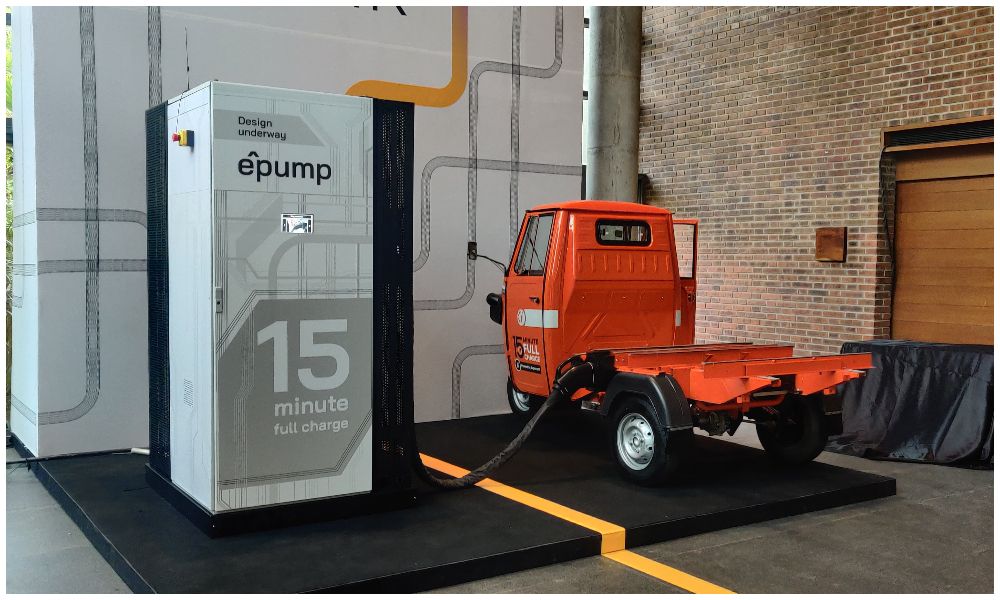
How can Exponent Energy do this 15-minute Rapid charging?
Working of Li-ion batteries
Before this, let’s understand the working of a lithium-ion battery. Like other batteries, Li-ion battery consists of Cathode (can be LFP, LCO, NMC, LMO based to provide Li-ions), Anode (can be graphite, silicon, and LTO based but generally graphite is used due to its low cost), Electrolytes (non-aqueous organic solvent plus lithium salt) and Separator (polypropylene, polyolefin materials) and some Additives. When charging is done, Li-ions from the cathode flow to the anode through an electrolyte while free electrons flow from external circuits and these both intercalate (get absorbed at the voids of anode materials). During discharging, the reverse process happens which means Li-ions and electrons flow from the anode to the cathode giving current and voltage in output.
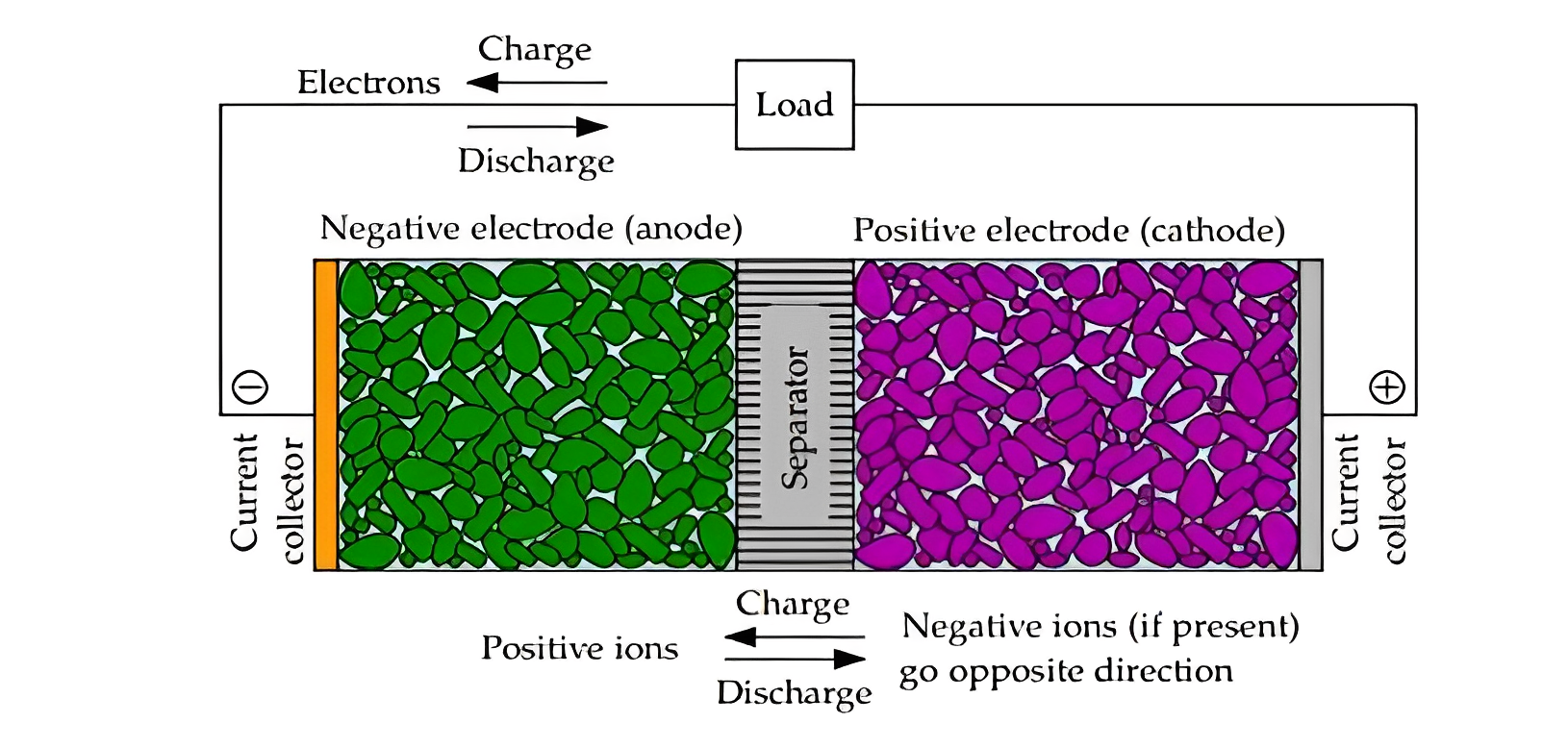
During each cycle, many side reactions happen among electrodes, electrolytes, and separators which cause degradation of Li-ions, increase in internal resistances, and increase in the temperature inside the cell causing thermal runaway of the battery.
Working of Exponent Energy Charging Technology
Exponent Energy’s charging station gives 600A DC current to charge the battery pack in the prescribed time. This creates a lot of heat inside (256 times more than normal charging). At this speed of charging lithium plating at the anode of the battery can be formed. Lithium plating is defined as the deposition of Li-ions on the surface of an anode rather than being intercalated inside the anode material. This continuous deposition can cause dendrite formation and can ultimately lead to short circuits inside the battery.
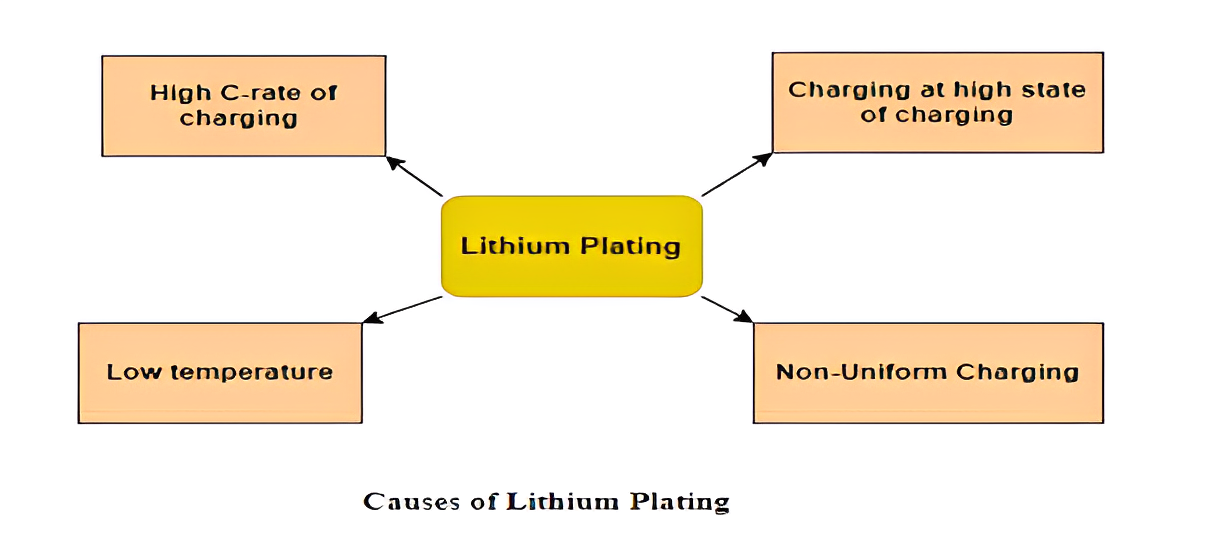
Lithium plating can lead to a decrease in the concentration of anode active, electrolytes, and lithium concentration which all together causes capacity and power to fade. It can be detected by electrochemical models (porous theory and pseudo-two-dimensional modeling to study internal cell behavior), and physical characterization of surface chemistry. Lithium plating also depends upon the charging topologies such as constant-current constant-voltage (CC-CV), multistage constant current (MSCC), pulse charging (PC), and boost charging (BC). So an advanced battery management system (BMS) is required to avoid lithium plating. Exponent Energy is using a virtual cell model and dynamic charging algorithm to monitor and control lithium plating. To keep the battery pack in the optimal range of temperature (25-35℃), the company is using an off-board thermal management system that uses refrigerated water to keep the battery pack in the set limit of temperature. Cooled water from the charging station (e-pump) flows over an aluminum heat sink attached at the top and bottom of each prismatic LFP cell of the battery pack to extract the heat.
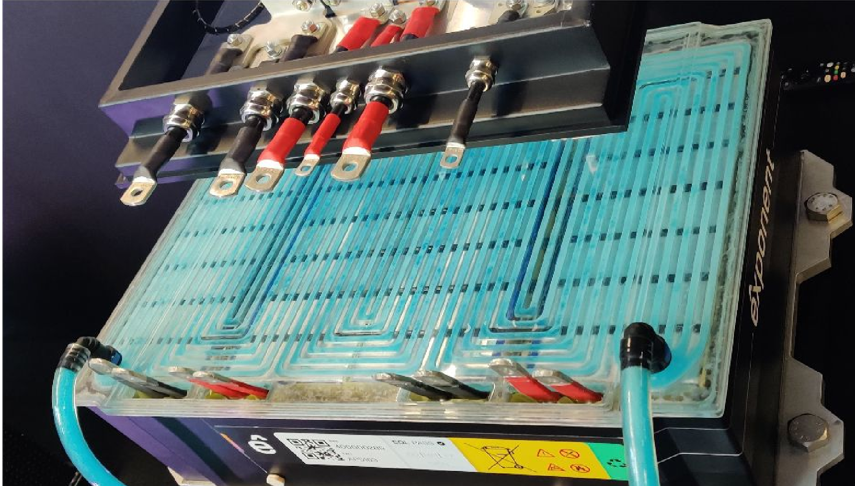
Charger Connector of Exponent Energy
Exponent Energy has specially designed its charger connector for this rapid charging. It is not according to conventional connectors like CCS1 or 2 , GB/T, and CHAdeMO. Its weight is approximately 8kg. It has a total of 11 pins, 4 pins for power transfer, 2 pins for water( cooling purposes), and the remaining for communication protocol (CAN bus). The company experts have said that in the future the weight of the connector will be reduced.
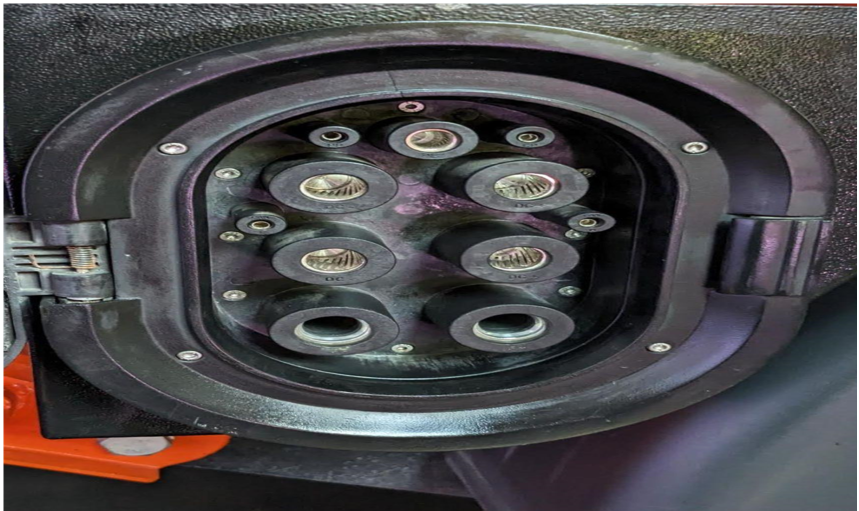
Adaptability of Charging Station
Exponent Energy charging station can be used for charging its company battery pack only. Because of its proprietary design of charging technique, it is unable to charge other OEMs battery packs. However, the company expert at the expo has claimed that if any OEM has followed Exponent Energy’s battery pack design and has equivalent BMS ability can also use its charging station. The company has set the target of setting up 1,000 charging stations to power about 25,000 EVs by 2025.
Read More:- Exponent Energy Showcases patented ‘Water-Based’ off-board Thermal Management System

